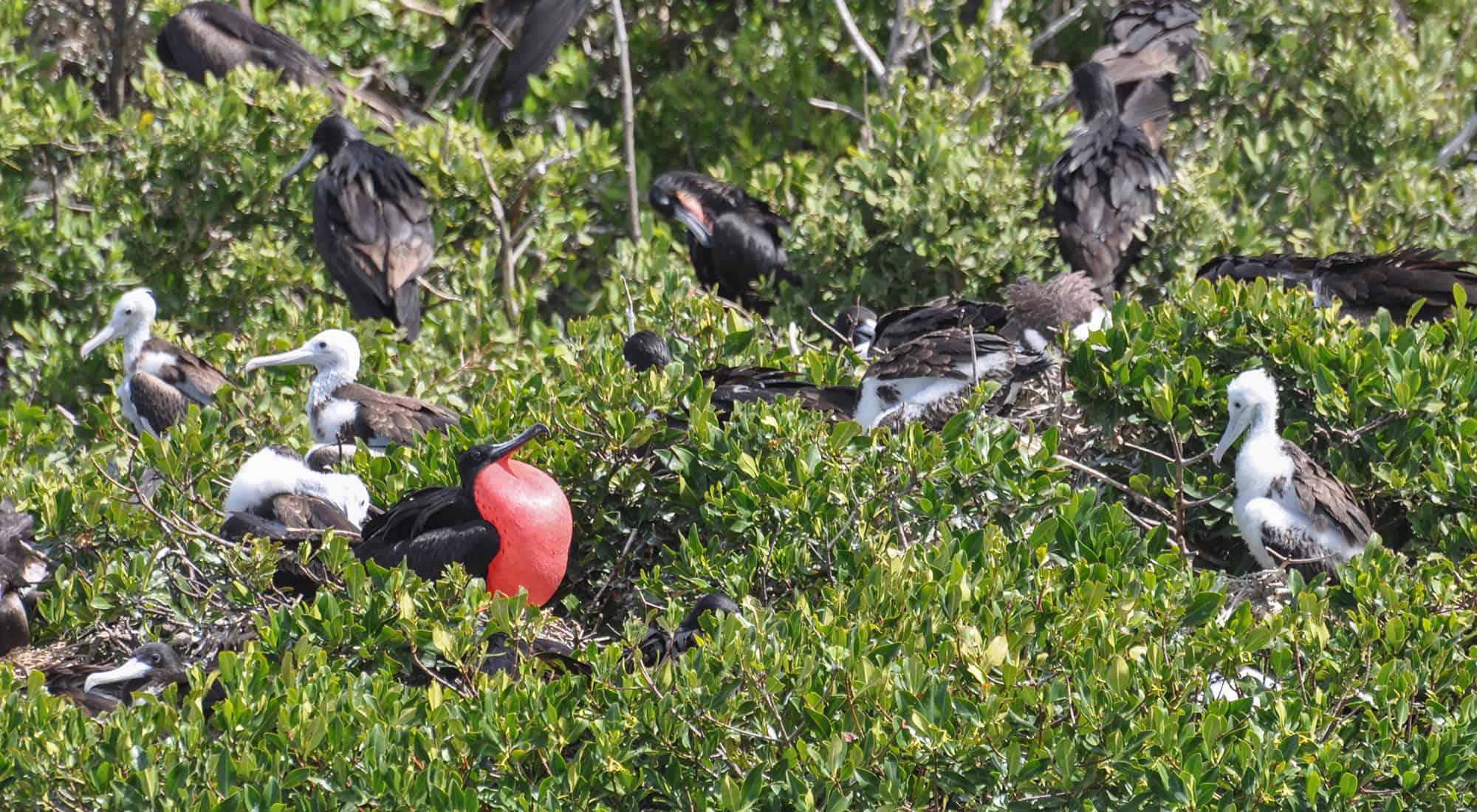With a wing span of 8 ft and the ability to fly up to 22 mph, sometimes at heights of 2000 ft, frigate birds (Fregata magnificens) are indeed magnificent when seen soaring high in the air, using the thermals to suspend themselves.
They cannot, however, walk or swim, having very short legs and small feet despite a weight averaging about 3 lbs, so they need to take off from a high vantage point. They’ve picked up a trick or two, including piracy, which has earned them the nickname of the man-o’-war bird.
Because they can’t swim, nor have waterproof feathers, their fishing technique relies on finding fish or squid close to the surface which they can just skim off. But failing that they have developed a method of hassling other seabirds, encouraging them to regurgitate whatever they have just caught, and in an amazing display of aerobatics, the frigate birds manage to catch the food before it hits the water and get themselves a free meal.
Their breeding season is roughly September-January, although even later you can still see males displaying their bright red pouches, blowing them up like balloons to attract a mate. It is the male who chooses a nest site, and when he is sure he has found a long-term partner, he builds a precarious nest of twigs in the mangroves alongside all the other males.
The female lays a single egg, which the male incubates and initially cares for once it is hatched. The chick is born white and fluffy and sits on the twiggy nest, suspended above the water, for eight to 10 months until it is fully fledged. It takes a lot longer to be fully proficient at flying and feeding itself, and it will be about six years before they start breeding themselves.










